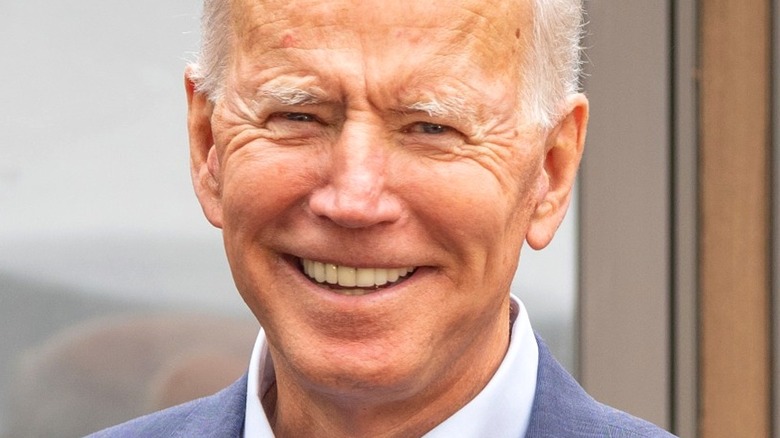The Big Change President Biden Wants To Make To Nutrition Labels
When we take a look back in history, the prospect of a new President often signifies the implementation of updated policies. Health is a topic that has gained significant traction over the years due to the shocking statistics surrounding the obesity epidemic and lack of food in everyday households. The World Health Organization suspects 167 million people will have poor health due to obesity by 2025. Alternatively, the USDA's 2021 statistics show that 33.8 million people live in homes where food isn't always guaranteed.
1969 marked a time of concentrated focus on health and hunger in America through President Nixon's White House Conference on food, nutrition, and health (via Tufts). While the conference spread mass awareness and made significant changes to the hunger relief organizations around the country, it failed to eradicate hunger for the majority.
Moreover, the Obama administration marked advancements to end hunger and obesity in America's children by allocating funds to support public schools by providing free or discounted meals (per Voa). In addition to Michelle Obama's "Let's Move" campaign, 2016 also marked updated nutrition labels to include serving sizes reflective of how much people actually eat, boldface caloric numbers, and added sugars (per FDA).
As our current president prepares to end hunger in America after hosting the second-ever White House conference with a focus on nutrition and health, among his laundry list of plans include changes to America's nutrition labels.
Biden plans to make nutrition labels more accessible to Americans
President Biden just hosted the White House conference on "hunger, nutrition, and health" yesterday, and besides his plans to continue free meals in public schools, and working with Medicare to include more nutrition-focused plans, he announced changes to the labels of packaged food in the United States.
According to Biden's plan of action, these label adjustments are covering four main significant points. First, nutritional information will be placed on the front of packages to heighten visibility and hopefully fix the real reason why food labels aren't always effective. "Star ratings and traffic light schemes" will be developed by HHS FDA to make healthier products more obvious. Additionally, a universal "healthy" label will be added to products that fit within a standard of criteria formulated by the FDA in accordance with "current nutrition science."
The White House Administration also plans to provide additional funding to CFSAN which is the organization responsible for guaranteeing the safety of nearly 80% of food products sold in the United States (per WhiteHouse.gov) Finally, those who enjoy shopping online are guaranteed to have readily available nutrition information on purchased products. This new system should help streamline consumers' accessibility to the true nutritional content of packaged products.

